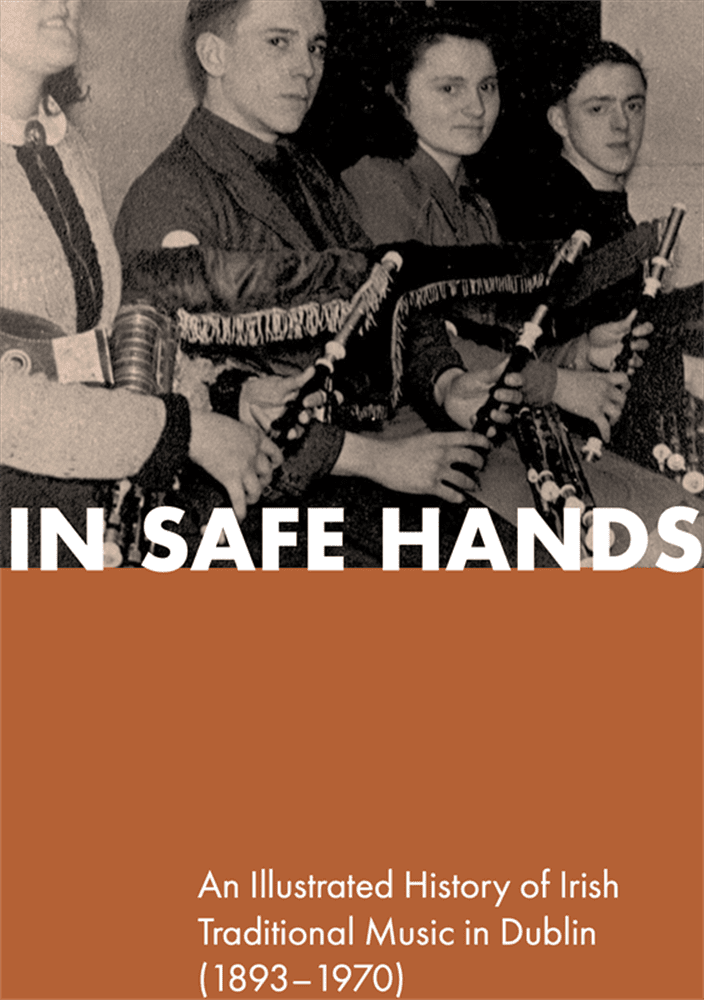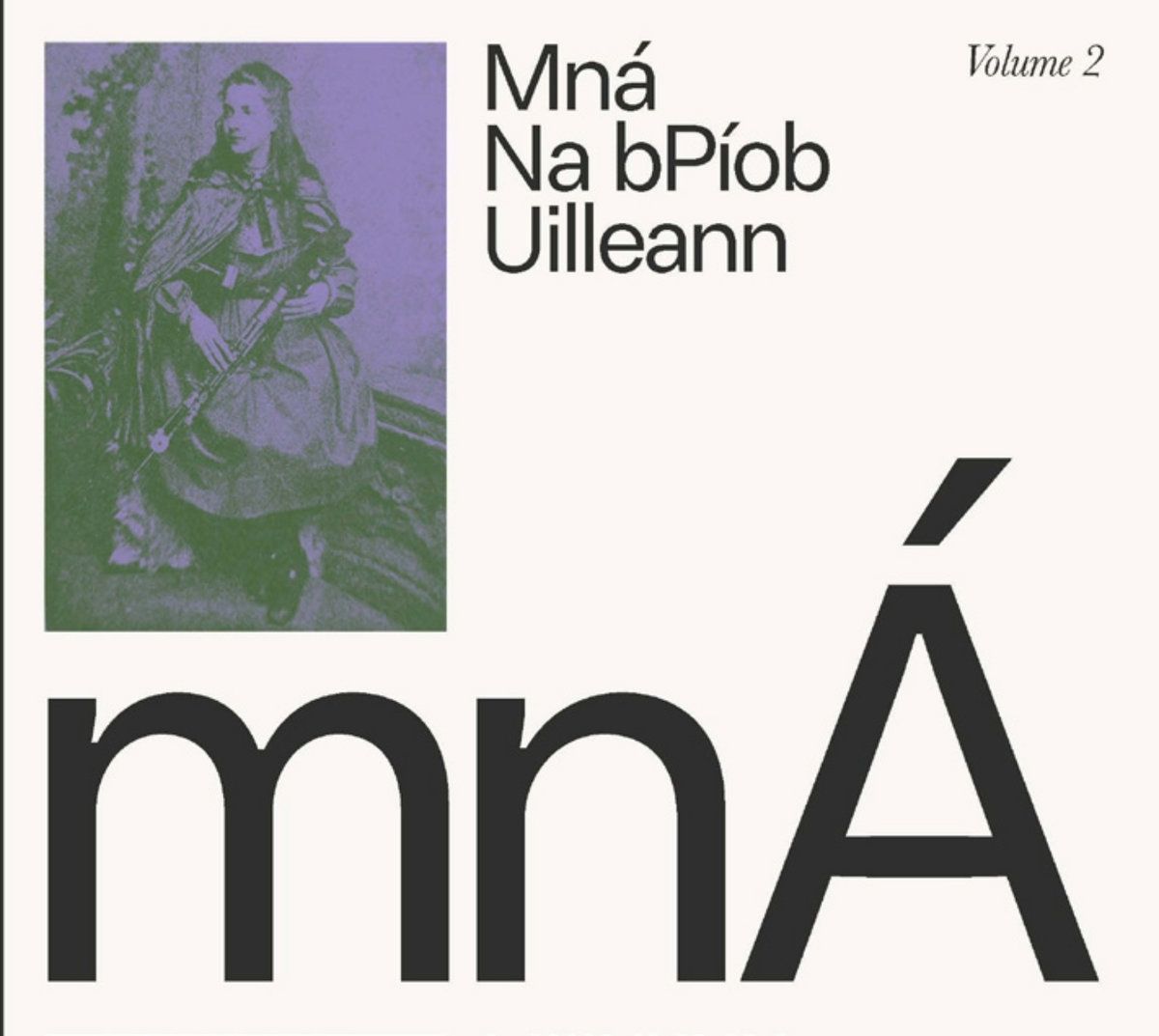This week I’ve got a report on a few bits coming out of Dublin’s biggest archival institutions in Na Píobiarí Uilleann and the Irish Traditional Music Archive. We’ll start with what’s the media yoke, and that is “Mná Na bPíob Uilleann, Volume 2,” the follow up to the NPU’s successful “Mná Na bPíob Uilleann, Volume 1” released back in 2023. It’s a compilation that documents six women actively involved with elevating the uilleann piping tradition and is a lovely album of dynamic piping music that traditional music fans will want to have on their radar.
The album’s featured artists are Lottie Cullen, Colleen Shanks, Louise Mulcahy, Deb Quigley, Jane Walls, and Shelia Friel. Cullen, a multi-instrumentalist from Wicklow, has several All-Irelands to her name, has toured widely throughout the world and has performed and recorded with folks like Sting, Afro Celt Sound System, Donal Lunny, Mary Black and many others.
Although Shanks is from Michigan, she now lives in Clare and is a graduate of the Irish World Academy. She’s worked with a range of excellent contemporary pipers, including Blackie O’Connell and Mickey Dunne.
Mulcahy, who comes from the famous Mulcahy family of musicians, is one of the great pipers of today and has many credits to her name, including the solo album “Tuning the Road” and “Mná na bPiob,” a documentary about the hidden story of women pipers in history.
County Down’s Quigley was introduced to traditional music in the 1970s but it wasn’t until the 1980s that she found Chris Langan and began her journey on the pipes. Walls, who comes from Antrim, learned from Gay McKeon through Na Píobiarí Uilleann and is a six-time All-Ireland solo champion. And finally, there’s Friel, who hails from Donegal but maintains strong ties to Glasgow. Her band the Friel Sisters (which includes her two sisters) has released a pair of top-shelf albums and she’s been a powerful voice for the instrument on the global stage for a long time now.
The piping on this well-curated record is exceptionally strong. The clean, relaxed nature of Cullen’s playing is most clearly heard in “The Wise Maid,” but all three of her tracks have something to recommend. I love the rhythm in Shanks’s playing, especially as it’s heard in “The Fairies' Hornpipes / …,” which is a great track.
Mulcahy’s playing is always incredible, but her take on “Bean Dudh A’Ghleanna” here is just an exceptional stand out. The tone of her pipes is beautiful, but it’s her powerful playing and superior regulator work that define the track. (Her playing on “Bar na Cúille / …” is flying as well.)
Quigley’s playing is very sweet in general, but of her three tracks the one that stands out to me is “An Drumin Donn Dileas / The Mountain Hornpipe.” Her approach to the tunes is warm and inviting, but I love the tune selection, the second being a great interpretation of a composition by the great Mike McHale.
Walls’s interpretation of the air “Cailín na Gruaige Doinne” and “Carolan’s Concerto” are both really outstanding. She plays with great control, which makes her playing really stand out on this album, a tough feat when there are so many fine pipers involved. The same might be said for Friel’s tracks. Her take on the airs “Iníon A’ Bhaoghaillgh” and “McSweeney’s Lament” are just great. It’s engrossing music that is a delight to hear.
The range of individual styles gives this album a real charm but it’s the strength of the music that ties it all together. It’s another great release for NPU and more evidence of the leading role women have in the elevation of this instrument and its heritage. To learn more about “Mná Na bPíob Uilleann, Volume 2,” visit NPU’s website here.
And since we’re on the subject, don’t forget, Saturday, November 1st is International Uilleann Piping Day! According to NPU’s website, International Uilleann Piping Day is a co-ordinated day of piping activities and events intended to raise awareness for and celebrate uilleann piping communities and enthusiasts around the world. It includes events that are both in person and online. In the U.S., Piping Day activities will take place in St. Louis, Boston, Los Angeles, Cleveland, Florida, Virginia, and Salt Lake City. Visit NPU’s website (see above) for details.
In other transatlantic news, a delegation from the Irish Traditional Music Archive is here this week for the US premiere of “Tommie Potts: The Fireman Fiddler of the Coombe.” They’ll show the film, while filmmaker and singer Macdara Yeates, author and uilleann piper Seán Potts, retired FDNY battalion chief Eddie Boles, and RTÉ broadcaster Aoife Nic Cormaic, will be there to talk about it, and Aoife Ní Bhriain will run a master class on Potts’s style, technique, and interpretation. Liam O’Connor, ITMA’s director, will also be there leading the charge.
For those who mightn’t know, O’Connor is the son of the highly esteemed flute player Mick O’Connor, not only known for being the leader of the legendary Castle Céilí Band but for being an indefatigable researcher of the music. Mick recently published “In Safe Hands: An Illustrated History of Irish Music in Dublin (1893-1970),” a richly detailed and important book describing the history of traditional music in Dublin that lovers of traditional music should be aware of.

O’Connor collected the material that’s presented over the course of four decades and it shows. The research here is mature and well developed and it’s clear his background allowed him special access to rare material. It really seems like he’s left no stone unturned. The Pipers’ Club in Dublin is one of the important subject areas, and O’Connor covers it thoroughly, from its establishment in 1900, through its involvement in the formation of Comhaltas Ceoltóirí Éireann in 1951 (which makes this book an interesting companion to Méabh Ní Fhuartháin’s recent book “Heading to the Fleah”), all the way up to the establishment of Na Píobiairí Uilleann in 1968. O’Connor also examines the pipe bands and céilí bands that emanated from club activities.
O’Connor’s covered many other bases as well. He spends time sketching the biographies of the pipers in Dublin during the Gaelic revival as well as the pipers who came to Dublin for piping competitions during that period. There is, of course, a chapter on pipemakers, as well as a captivating chapter on the Rowsome family dynasty which appears definitive and exhaustive. O’Connor also takes a chapter to describe some of the family musical dynasties that came out of Dublin. (Tommie Potts’s family is among the families profiled, as is that of the great James Keane, but many others are also described.)
The book’s longest section is called “Biographies of Tradition Bearers” which is over 150 pages long. It gives readers great perspective on a large number of important Dublin-based musicians who gave shape to the music over the better part of a century. It’s expertly written and extremely informative.
If this book isn’t already considered a landmark work, I’d be surprised. The research is comprehensive, it’s lovingly presented and the literally hundreds of jaw-dropping photos included in the book’s 551 pages really bring the history alive. There is a lot here to dig into and is a truly important resource. Problem is, I’m not sure if this book is currently available as I’ve heard whispers that the first edition may have sold out – I’d keep an eye on ITMA’s website. Regardless, O’Connor has given the world of traditional music a real gift – make an effort to check it out if you have the opportunity!








